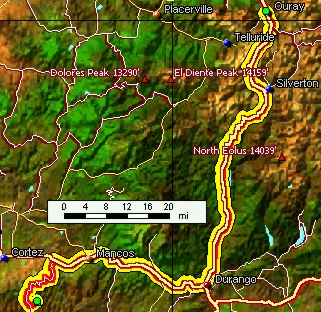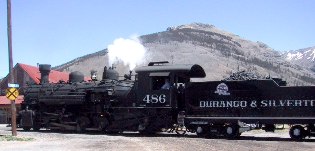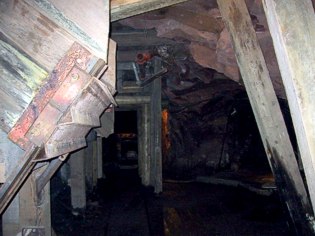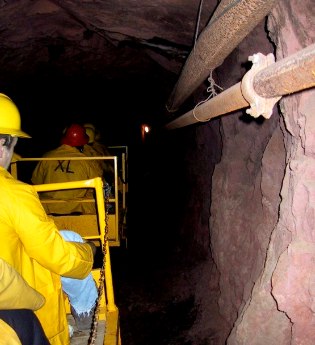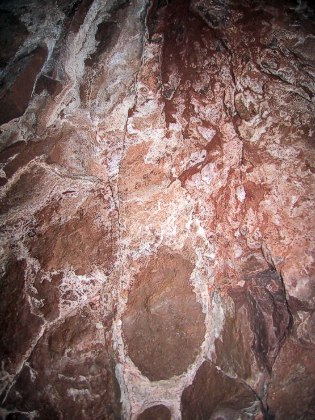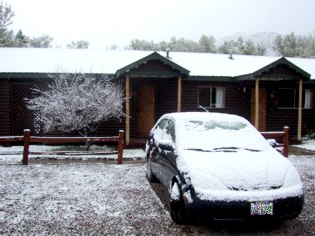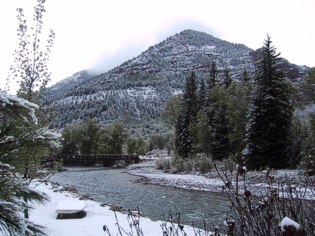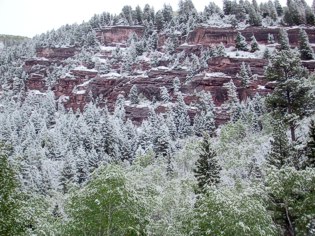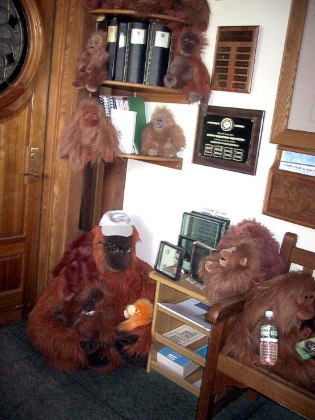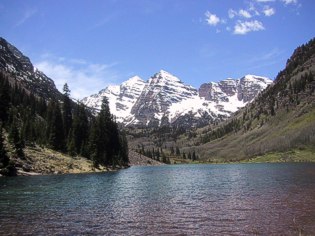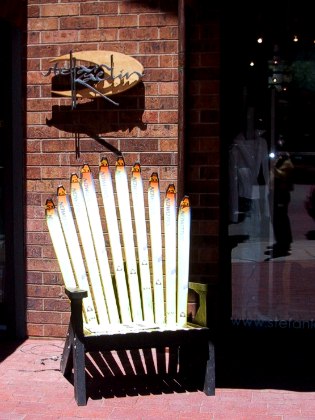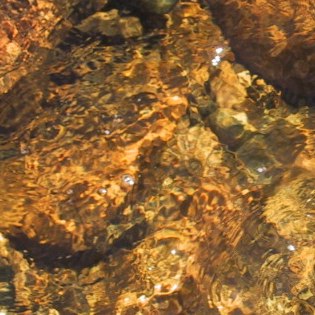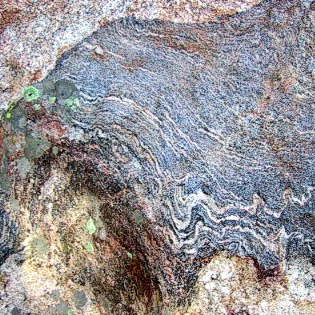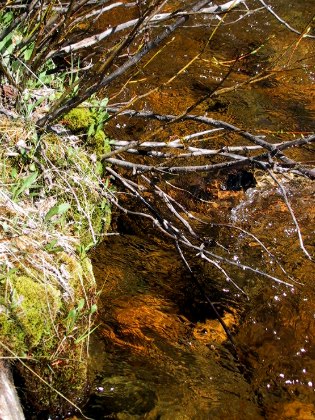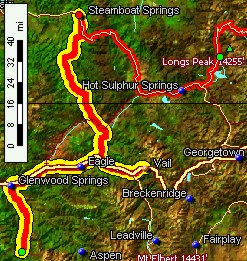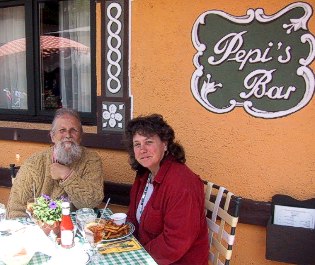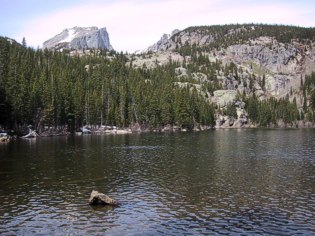
Ouray
Next day, we drove back down onto the margin of high desert that borders the Rockies on the west, then back into the Rockies into the Crystal River valley, a tributary of the Roaring Fork.
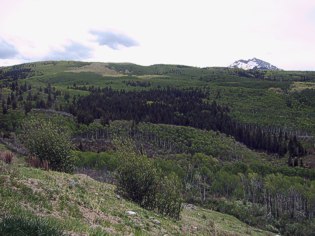
Aspen masses in the high country |
I'd always driven through Ouray and thought, "What a nice town, and what a spectacular location! I'd like to stay here sometime..." So we did. Turns out it is a lovely little town, isolated and completely dependent, now that the mining's over, on tourism, Main Street completely taken over by cute gift shoppes. Ouray's one enduring claim to fame is its hot mineral springs; even our motel had one.
After New Mexico's ersatz adobe -- they call themselves a "third world state" -- Colorado's trim brick buildings and broad, well planned streets were a surprise.
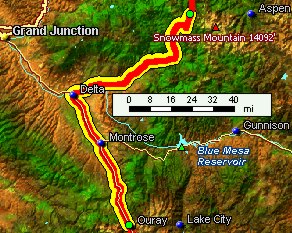

Aspen, one of the predominant trees above 8,000', may start as individual trees, we learned, but their roots connect, and large populations of them, sometimes hundreds of trees, coordinate their spring leaf and autumnal color behaviors. The consequence is that in Spring and fall, groups in different states provide a striking patchwork on the mountainsides. |
